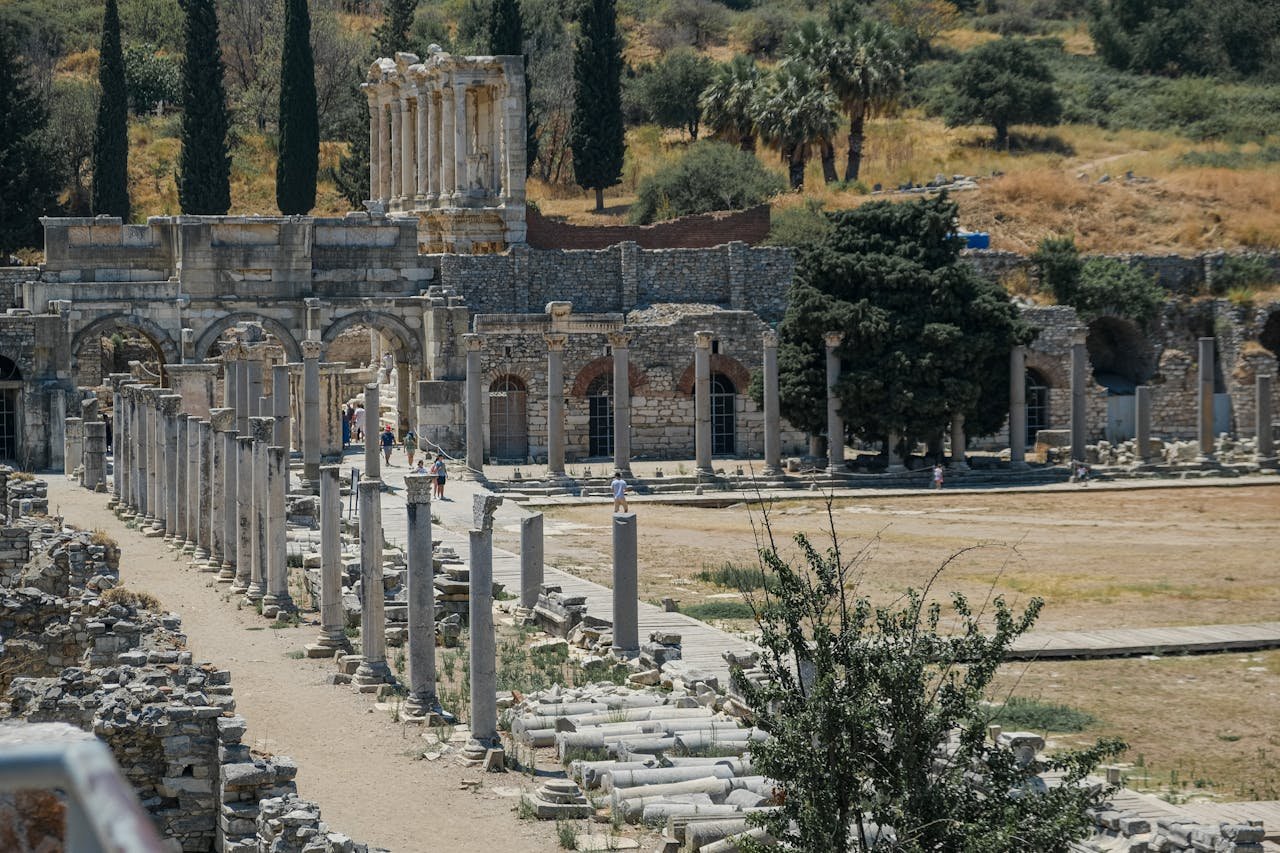Uncover the secret of pyramid construction in our latest blog post. Explore the mysteries behind these ancient architectural wonders.
Revealed: The Secret of Pyramid Construction
The ancient Egyptians made a big impact on history with their amazing pyramids. These huge buildings represent power and eternal life. They have fascinated people for thousands of years. In this blog, we will look into the mystery of how the pyramids were built. We will reveal the secrets of the ancient Egyptians’ impressive engineering skills. From the stone quarries to the top of the pyramid, we will take you on a journey to learn how these incredible structures came to be.
Unveiling the Architectural Genius Behind the Pyramids
The building of the pyramids was an amazing act of engineering. It required careful planning and a good knowledge of geometry and astronomy. But how did the ancient Egyptians do such precise work with the tools and technology they had?
Let’s look into the interesting process of pyramid construction. We will cover the complicated designs of the pyramids and the clever ways they moved and lifted huge stone blocks.
Analyzing the design complexities of pyramid structures
The Great Pyramid of Giza shows us how smart the ancient Egyptians were at building. This pyramid has a complicated design with big size and careful layout. It is perfectly lined up with the main directions, and its inside has chambers and passageways. This shows they understood geometry and astronomy very well.
Choosing the right building materials was vital for the strength and long-lasting nature of the pyramids. Most of them were made from limestone taken from nearby places. The large, well-cut blocks used in the core of the pyramids gave them stability and less need for mortar.
For some parts, like the burial rooms and the outer layers, the ancient Egyptians chose stronger stones like granite, which came from places like Aswan. These stones, moved from far away, made the pyramids even more beautiful and sturdy.
The evolution of pyramid construction techniques over dynasties
The ways to build the pyramids changed over time. These changes came from new ideas in engineering and different resources. In the Old Kingdom, when many famous pyramids were built, the goals were to create perfect pyramid shapes and smooth sides.
During the Middle Kingdom, builders started to use cheaper methods. They included natural hills in the designs to use less material. Mud-brick layers became popular and were covered with limestone to make them look nice.
A recent study in the Journal Communications Earth and Environment gave new details about how the Nile River and its parts helped in building the pyramids. This study said that a now-gone branch of the Nile called the Ahramat branch helped carry materials to the pyramid sites. This shows how the ancient Egyptians smartly used nature to solve problems in moving heavy things.
Deciphering Ancient Egyptian Engineering
The ancient Egyptians were not only great at using raw materials, but they also knew a lot about geometry and astronomy. This knowledge was essential when building the pyramids.
The pyramids were not just random stacks of rocks. They were built with careful attention to the stars and lined up with the main directions.
The accuracy shown in the construction of the pyramids shows that they used advanced surveying methods and had a strong grasp of astronomical events.
The role of geometry and astronomy in pyramid alignment
The exact way the pyramids line up with the cardinal points has confused scholars for a long time. Many believe the ancient Egyptians used stars, especially the north star, as a guide for their surveys. By watching how stars moved in the night sky, they could find true north very accurately.
Geomorphologist Eman Ghoneim and her team found the Ahramat branch, which gives more information about the River Nile and pyramid construction. This branch is close to the Giza pyramid complex and may have old harbors. This shows the Egyptians depended on water transport for getting construction materials.
The River Nile was not just a water source. It was crucial for moving large stones, tools, and people. The ancient Egyptians knew how to use their environment really well to build their grand pyramids.
Materials and tools: From quarry to construction site
The ancient Egyptians chose their construction materials very carefully when building the pyramids. Limestone was the main material, and it came from quarries near the Giza plateau. Granite was brought in from faraway Aswan.
A research team from the University of North Carolina Wilmington, along with many other scholars, studied the tools used for quarrying and shaping these large stones. The Egyptians used copper chisels, dolerite pounders, and saws to cut and shape the blocks. This shows how clever they were in working with the materials they had.
Moving these huge stones from quarries to building sites was not easy. The ancient Egyptians managed this challenge skillfully. The Nile River was very important for this task. There is proof that they used boats and canals to transport blocks that weighed several tons.
Mysteries of Labor and Workforce Mobilization
The construction of the pyramids needed a large and organized group of workers. Contrary to what many people think, there is proof that these pyramids were not built by slaves. Instead, they were built by skilled workers who got paid for their efforts.
These workers often had different shifts. They worked in teams and had roles, showing how the ancient Egyptians understood project management and the way to use labor well.
The organization of labor: Slaves, peasants, or paid workers?
The size of the pyramids makes us think about the people who built them. Earlier ideas said that slaves did this work, but new findings show something else. Now, it seems the workers were paid. They included skilled craftsmen, laborers, and managers.
People still argue about how many workers built the pyramids. Some say it was tens of thousands, while others believe more than 100,000 were involved at busy times. Near the Nile branch, they found worker camps that had bakeries and cemeteries. This shows us how these workers lived and organized themselves.
This group of workers likely worked in cycles and helped build the pyramids not through force, but through a skillful system of labor and resource use. This reveals how well the ancient Egyptian civilization was organized.
Daily life on a pyramid construction site
National Geographic and other archaeological studies help us understand how pyramid builders lived every day. Workers stayed in temporary homes close to the job sites and built strong communities. There is proof that they had plenty of food, beer, and access to medical help.
Moving the large stones, which could weigh up to 80 tons, needed teamwork and good planning. They used ramps, levers, rollers, and ropes to move these huge stones into position. This shows how clever and strong the builders were.
These workers were not just nameless slaves. They were real people with families, beliefs, and skills. Their hard work and teamwork over many years created the lasting symbols of ancient Egyptian civilization.
Innovative Techniques in Moving Gigantic Stones
Moving the huge stones for pyramid construction was no easy task. Some of these stones weighed more than 80 tons. It took clever techniques and strong knowledge of physics to handle them. People often think that ramps mainly helped, but the true methods are still a mystery to researchers.
Let’s dive into some ideas about how the ancient Egyptians might have moved these giant stones. They could have used the Nile River, ramps, sledges, and even oils to help.
Leveraging the Nile: Transportation networks and infrastructure
The Nile River was very important for ancient Egypt. It helped a lot with building the pyramids. People in ancient Egypt created canals and harbors. These were used to move the huge stones from quarries to the pyramid sites.
The canals were built to make moving heavy cargo easier. Workers might have used wooden sledges to float the stones down the Nile and through the canals. They took advantage of the river’s current.
When the stones arrived at the pyramid base, they were unloaded. Then workers used ramps, rollers, and levers to put them into place. This way of transporting shows how skilled the ancient Egyptians were in logistics and building systems.
Ramps, sledges, and water lubrication theories revisited
The use of ramps is well-known, but people still disagree about how these ramps were built. Some think they were straight, while others suggest they were spiral and wrapped around the pyramid. There is also a belief that the ancient Egyptians used water to help move the heavy stones more easily.
Geomorphologist Eman Ghoneim found the Ahramat branch in Egypt. This discovery supports the idea that water was important in pyramid construction. Researchers think this branch, which is now covered by sand, was used to float the stones closer to the pyramids. This would make it easier to move them.
Even after many years of research and many ideas, how the ancient Egyptians moved and lifted the pyramid stones is still a mystery. However, the skill and creativity they showed is clear and makes the pyramids some of the greatest engineering successes in our history.
Conclusion
In conclusion, building pyramids is still a mysterious and amazing example of old engineering skills. The detailed designs and clever ways to gather workers amaze many people. The way the pyramids fit with geometry and astronomy is interesting. The use of advanced tools and materials, along with how the worker teams were organized, adds to the impressive history of the pyramids. Their lasting mystery shows how smart and skilled ancient people were. This invites more study and learning about the secrets they keep.
Frequently Asked Questions
How long did it take to build a pyramid?
Building an Egyptian pyramid, like the great pyramid of Giza, was a huge task. The great pyramid of Giza has a complex Grand Gallery and links to an old part of the Nile. It likely took around 20 years to complete one pyramid. Many workers, numbering in the tens of thousands, were involved in this project.
Were the pyramids built by slaves?
Evidence shows that the pyramids were not built by slaves, which many people think. Archaeological discoveries, like worker homes and grave sites, reveal that skilled workers did the job. These workers received payment for their labor. The organization in moving heavier blocks was also impressive.
What was the purpose of the pyramids?
The ancient Egyptians built pyramids to serve as grand tombs for their pharaohs. They thought these pyramids were not only places to bury their leaders but also ways to help them reach the afterlife. The Great Pyramid was more than just a tomb; it stood for royal power and religious faith. It showed how the ancient Egyptians understood building materials and design.
Can the pyramids be considered as technological marvels of their time?
The pyramids were amazing feats of technology for their time. They were built by human workers using clever ideas. These structures show how advanced the ancient Egyptians were in math, astronomy, and engineering. Even today, using modern tools, it would be very hard to duplicate their accuracy and size.
Are there hidden chambers yet to be discovered within the pyramids?
The idea of hidden rooms inside the pyramids keeps puzzling researchers. Many chambers and passageways have been found. But new technology, like radar satellite imagery, gives us fresh ways to look into these ancient buildings. This helps us explore them without taking apart anything, so the mysteries of the pyramids remain exciting.










